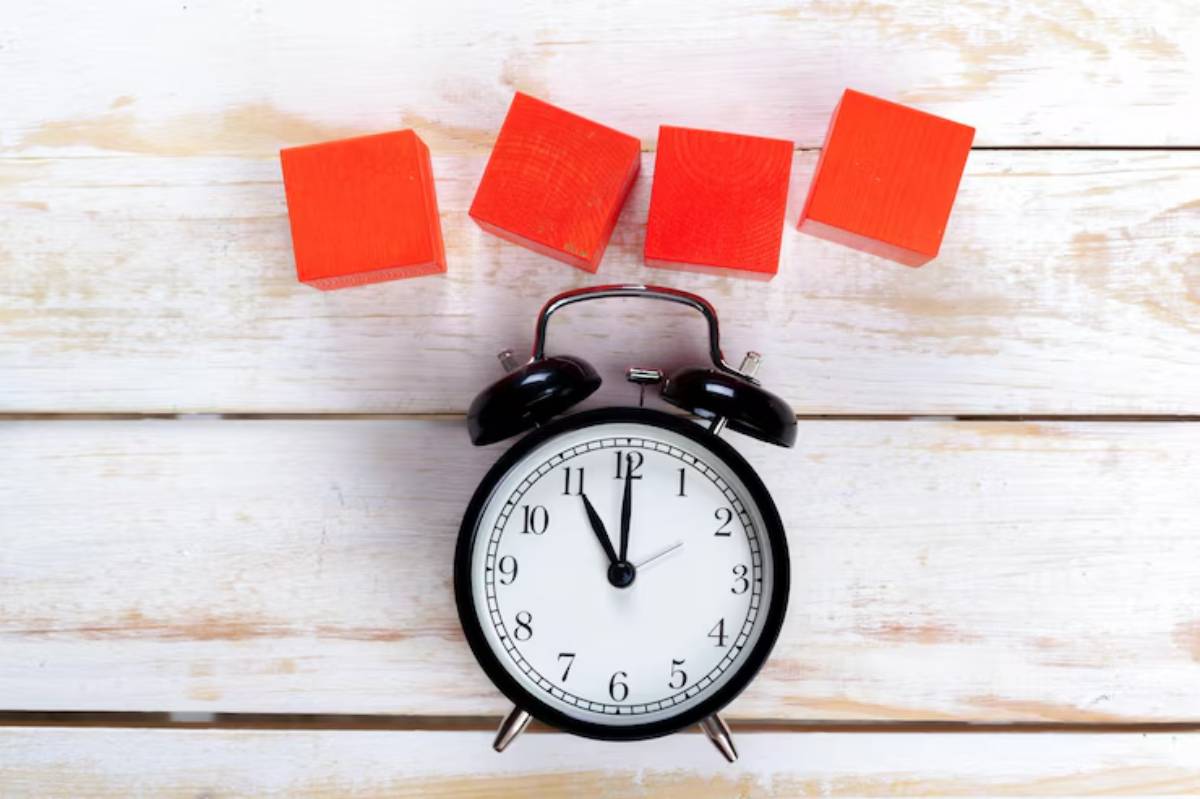
7 Science-Backed Ways to Beat Procrastination
Struggling to Get Started? You’re Not Alone
You sit down to study. The clock ticks. Your books are open, but suddenly scrolling social media or watching just one more video feels urgent. Sound familiar? Procrastination is one of the most common and frustrating obstacles in school life. The intention is there, but the action just doesn’t follow.
The good news? Procrastination isn’t about being lazy. It’s often a result of stress, perfectionism, fear of failure, or simply poor planning. And more importantly, it can be managed. This blog shares seven proven ways to stop procrastinating in school. Use these tips to break bad habits and find your motivation again.
If you’re getting ready for exams, catching up on lectures, or finishing that assignment you’ve been avoiding, these practical strategies can help you take action. Use them often, not just once. Let’s dive in and start making progress, one step at a time.
Why Do Students Procrastinate in the First Place?

The Psychology of Delay
Procrastination isn’t just poor time management. It’s a self-regulation issue, often rooted in emotion. A 2013 study in Psychological Science shows that people delay tasks not due to poor time management, but to avoid negative feelings like anxiety, boredom, and frustration.
For students, this could look like:
- Avoiding writing an essay because it feels overwhelming
- Putting off revision because the subject seems too hard
- Skipping reading because it’s tedious or mentally draining
Understanding the “why” behind your delay is the first step to beating it.
Strategy 1: Use the 5-Minute Rule
What It Is
If a task feels too big or overwhelming, tell yourself you’ll do it for just five minutes. No pressure to finish. Just start.
This simple trick helps you take action. It lowers anxiety, which often leads to procrastination. Once you’ve started, your brain often chooses to continue — a phenomenon known as “behavioural momentum.”
How It Helps Students
- Breaks the perfectionism loop
- Encourages consistent action
- Makes the start less intimidating
Try this: Set a timer for five minutes and start outlining that essay or reviewing one flashcard topic. The momentum will often carry you through.
Strategy 2: Break Tasks Into Micro-Steps
The Science
Research in cognitive behavioral therapy (CBT) shows that breaking big tasks into smaller steps helps reduce overwhelm. It also boosts motivation. Your brain responds better to clear, small goals than vague or giant ones.
For example:
- “Revise biology” becomes → “Review notes on cell division”
- “Write paper” becomes → “Write the intro paragraph today”
How to Apply It
- Write down the main task.
- Break it into steps that take 10–30 minutes each.
- Schedule each one into your calendar or planner.
Completing small steps gives you a sense of accomplishment, reinforcing the habit loop. You might also benefit from a structured planning method like the Pomodoro Technique, which builds consistency through focused time blocks.
Strategy 3: Use Time Blocking to Stay Focused
What Is Time Blocking?

Time blocking helps you schedule tasks by giving each one a set time slot. You’re not just listing what needs to get done — you’re deciding when it happens.
A 2018 study from the Journal of Applied Psychology found that setting specific times for tasks boosts completion rates. It also helps cut down on procrastination.
How to Use It in School Life
- Create a weekly or daily study plan
- Reserve 60–90 minute blocks for high-focus tasks
- Schedule breaks and buffer time to prevent burnout
When your calendar shows “Study Chemistry 2 PM – 3:30 PM,” you’re more likely to follow through than if it’s just on a vague to-do list.
Strategy 4: Use the “Temptation Bundling” Method
Combine Work with Reward
Temptation bundling is a term from behavioural economist Katy Milkman. It means combining a task you need to do with something fun.
Example combinations:
- Only listen to your favourite podcast while doing your readings
- Allow 30 minutes of your favourite show after a study session
- Drink your best coffee only when revising flashcards
This method works by connecting quick rewards to long-term goals. This makes tasks feel more fun and less like chores.
Strategy 5: Create a Dedicated Study Environment
Context Shapes Behaviour
The environment around you can either trigger procrastination or support focus. A cluttered desk, a loud room, or a mixed-use space (like studying in bed) can cue your brain to switch off.
According to research in Environmental Psychology, a dedicated workspace improves cognitive performance and reduces distraction.
- Quiet, tidy, and free from non-study distractions
- Use a designated desk or study corner
- Keep only the materials you need in sight
- Use noise-cancelling headphones or ambient background noise
Small environmental tweaks can make a big difference to your consistency.
Strategy 6: Practice Self-Compassion, Not Self-Criticism
Why Shame Doesn’t Work
Many students believe they need to “be harder on themselves” to get things done. But research shows the opposite. A 2014 study from the University of California, Berkeley, found that self-compassion leads to higher motivation, while self-criticism increases stress and avoidance.
What This Looks Like Practically
- Instead of “I’m so lazy,” try: “I’ve been struggling, but I can take a small step now.”
- Forgive the missed day and focus on today’s action
- Celebrate small wins rather than only final results
The goal isn’t to be perfect — it’s to make progress.
Strategy 7: Track Your Progress Visually
Make Your Effort Visible
Tracking your study sessions, tasks, or streaks makes everything feel real and rewarding. Visual progress triggers dopamine release, making you more likely to continue.
Ways to Track:
- Use a habit tracker app or a printable template
- Create a study streak chart
- Tick off tasks on a whiteboard
- Use Google Sheets to monitor revision topics covered
You’re building a visual reminder of your commitment, and that’s a powerful motivator.
Real Student Story: How James Beat His Procrastination Spiral
James, a second-year medical student, used to cram for exams the night before. He described feeling anxious, exhausted, and frustrated — but didn’t know how to stop.
What changed?
- He started breaking revision into 30-minute blocks
- Used time blocking in Google Calendar
- Stuck his progress tracker to the wall above his desk
- Allowed himself small rewards after each session
“I didn’t become superhuman — I just stopped trying to do everything at once. One hour a day consistently made more difference than last-minute marathons.”
His grades improved, but more importantly, so did his confidence.
Common Procrastination Traps and How to Avoid Them
| Trap | What It Looks Like | How to Beat It |
| Perfectionism | “It’s not ready yet, I need more time.” | Set 80% as your completion target and hit publish or submit |
| Multitasking | Switching between tabs, messages, and notes | Use focus apps or the Pomodoro technique to stay on one task |
| No deadlines | “I’ll do it sometime this week.” | Create self-imposed deadlines or work with an accountability buddy |
| All-or-nothing mindset | “I don’t have 3 hours, so I won’t start.” | Do it for 10 minutes — that still counts |
Conclusion: Progress Over Perfection
Procrastination doesn’t mean you’re lazy or incapable. It means you’re human, navigating stress, fear, or mental fatigue. But you’re also capable of change.
Use science-backed strategies like the five-minute rule, micro-tasking, time blocking, and self-compassion. These methods can help you stop procrastinating in school. Take control of your time today! These aren’t just hacks. They are habits that help you stay motivated, get better grades, and build a healthier relationship with your studies.
Start small. Try one or two strategies this week. Celebrate the effort, not just the outcome. Every step forward — even the tiniest — is progress.
To make these procrastination fixes stick, you can train your brain with start-up rituals that reduce friction and make action automatic.
Which of these strategies will you try first? Share your thoughts below. What are your tips for overcoming procrastination as a student?
If you found this helpful, pass it on to a friend who’s stuck in a study slump. Let’s make procrastination one less thing to worry about.


